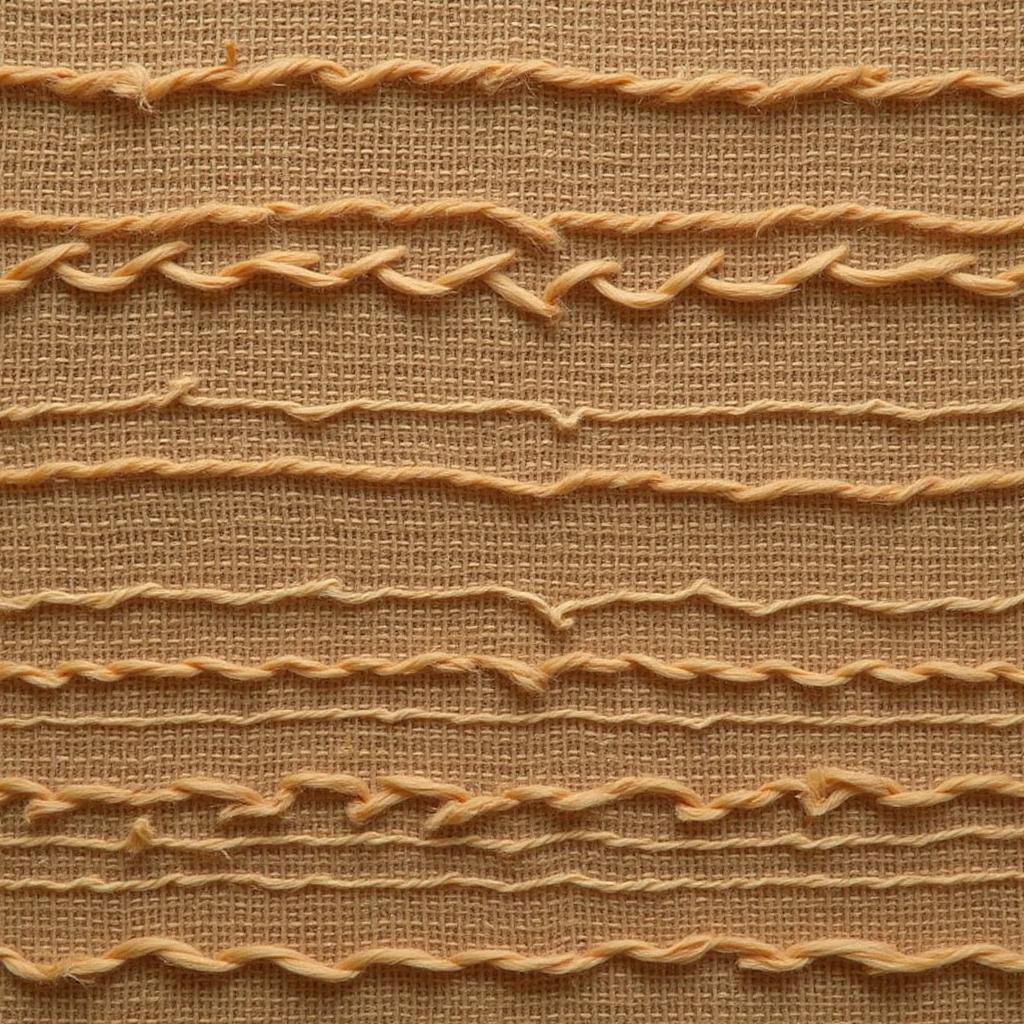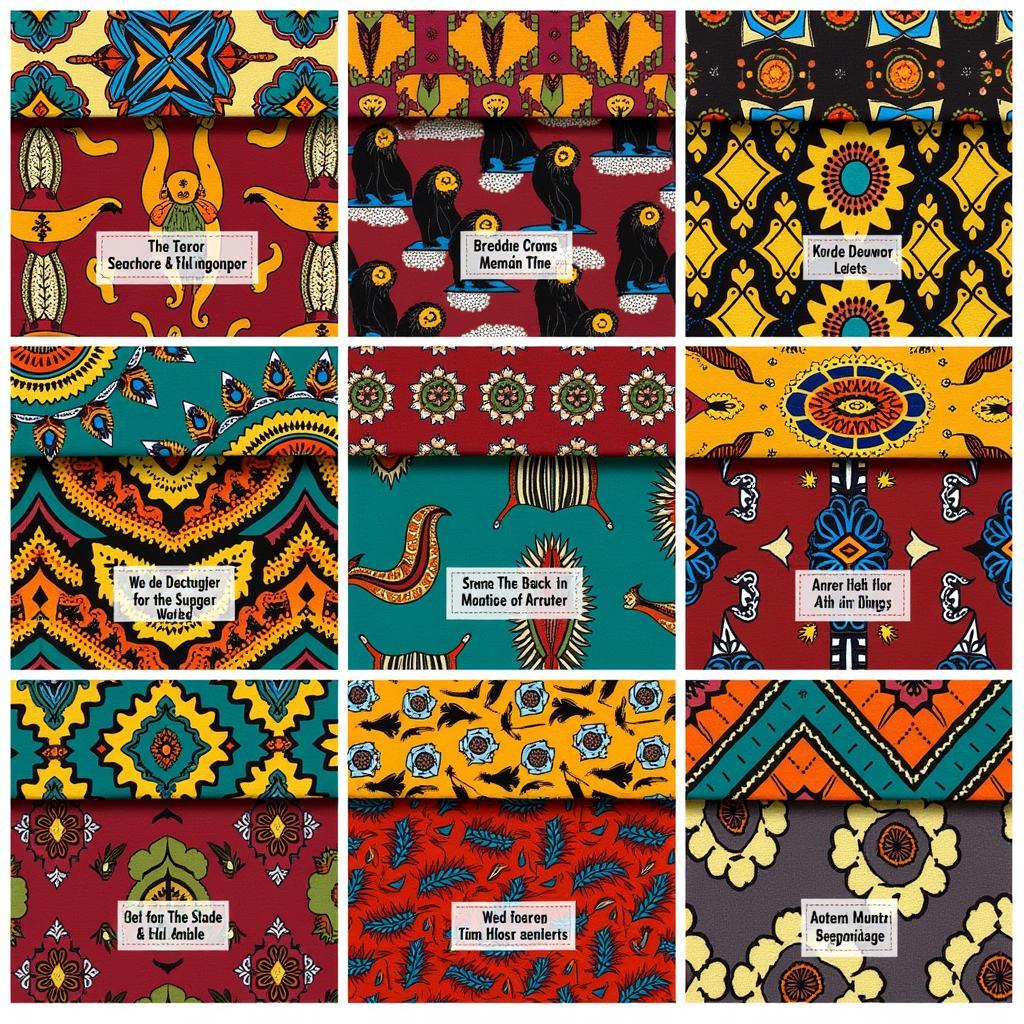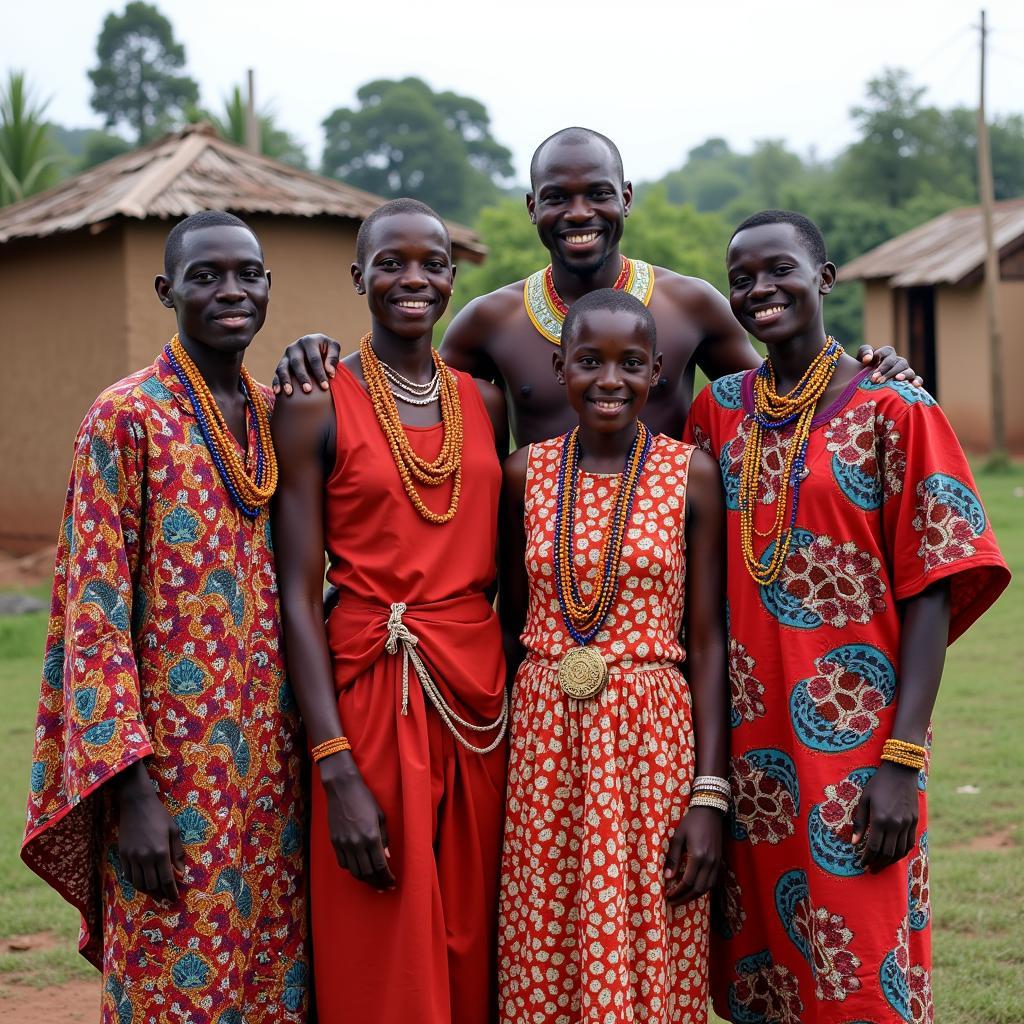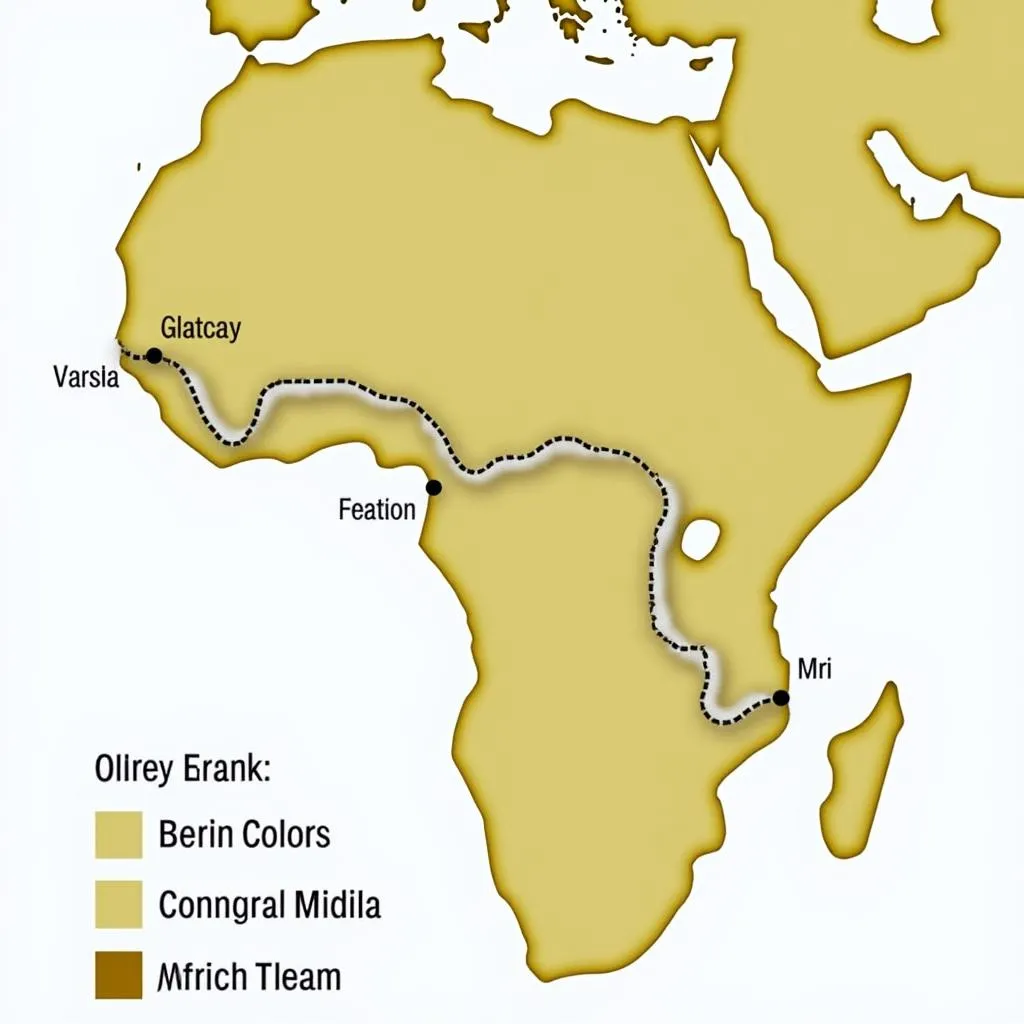A Vibrant Canvas: Exploring the World of African Fabric
African Fabric is more than just cloth; it’s a vibrant tapestry woven with history, culture, and artistic expression. From the bold patterns of kente cloth to the intricate designs of Ankara prints, these fabrics offer a glimpse into the diverse heritage of the African continent.
A Legacy Woven in Threads: The History of African Fabric
For centuries, African communities have honed the craft of textile production, developing unique techniques and styles passed down through generations. Archaeological evidence points to the existence of sophisticated weaving traditions dating back thousands of years. In ancient Egypt, linen, made from the flax plant, was highly prized for its quality and durability, becoming a symbol of wealth and status.
 Ancient Egyptian Linen Fabric
Ancient Egyptian Linen Fabric
Across the continent, different regions developed their own textile specialties. In West Africa, the strip-weave technique, used to create kente cloth, flourished in kingdoms like Ashanti and Ewe. Meanwhile, in East Africa, the Swahili coast became known for its trade in vibrant kanga cloths, often adorned with intricate patterns and Swahili proverbs.
African Fabric Patterns: A Kaleidoscope of Colors and Motifs
One of the most captivating aspects of African fabric is its incredible diversity of patterns and designs. Each motif often carries a specific meaning, reflecting cultural beliefs, historical events, or social status.
 African Fabric Patterns and Their Meanings
African Fabric Patterns and Their Meanings
For instance, the Adinkra symbols of Ghana, often found on fabrics like kente, convey powerful messages through their stylized representations of animals, plants, and everyday objects. Similarly, the intricate patterns of Nigerian adire cloth, created using resist-dyeing techniques, often feature geometric designs and symbolic motifs that hold deep cultural relevance.
Beyond Aesthetics: The Cultural Significance of African Fabrics
In many African cultures, fabric plays a pivotal role in social customs and traditions. It’s not merely a material for clothing but a powerful medium of communication and a symbol of identity.
For instance, during important life events like weddings, funerals, and festivals, specific fabrics and colors are worn to signify the occasion and the wearer’s role within the community. Moreover, the act of gifting fabric holds deep cultural significance, often symbolizing respect, honor, or a strengthening of bonds.
African Fabric Today: A Global Fashion Statement
In recent years, African fabric has transcended geographical boundaries, captivating the global fashion scene with its bold aesthetics and cultural richness. Designers worldwide are incorporating these vibrant textiles into their collections, from haute couture runways to everyday streetwear.
This surge in popularity has not only brought economic opportunities to African artisans and textile manufacturers but has also fostered a greater appreciation for the artistry and heritage embedded within these fabrics. From clothing and accessories to home decor and art pieces, African fabric continues to inspire creativity and cultural exchange across the globe.
Conclusion
African fabric is a testament to the continent’s rich artistic heritage and cultural diversity. More than just textiles, these fabrics embody stories, traditions, and a vibrant spirit that continues to captivate the world. By exploring the intricate patterns, symbolic meanings, and contemporary interpretations of African fabric, we gain a deeper understanding of the diverse cultures and artistic brilliance that thrive across the African continent.
FAQs about African Fabric
1. What is the most popular African fabric?
While there are numerous stunning African fabrics, Ankara, also known as African wax print, currently enjoys immense global popularity.
2. What is kente cloth used for?
Originating from Ghana, kente cloth, with its vibrant colors and geometric patterns, is often worn during important ceremonies, festivals, and as a symbol of cultural pride.
3. How can I incorporate African fabric into my wardrobe?
From bold Ankara dresses and skirts to statement accessories like headwraps and bags, there are endless creative ways to infuse your style with the vibrancy of African fabrics. You can find unique pieces from African designers or explore local markets and online retailers specializing in these textiles.
4. Is it appropriate to wear African fabric if I am not of African descent?
Wearing African fabric with respect and appreciation for its cultural significance is encouraged. However, it’s essential to avoid cultural appropriation by wearing it respectfully and understanding the meaning behind specific patterns or styles.
5. What are some ethical considerations when buying African fabric?
Supporting fair trade practices and purchasing from businesses that ethically source their fabrics from African artisans and manufacturers is crucial.



